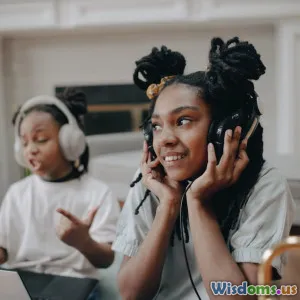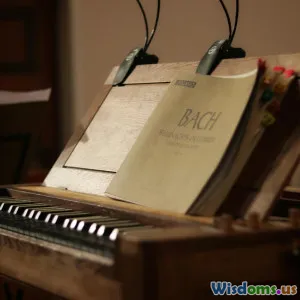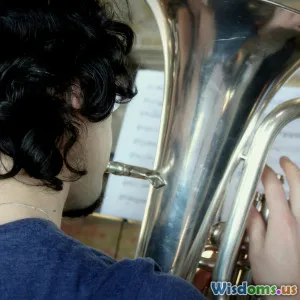
Is Classical Music Still Relevant to Gen Z Listeners in 2024
10 min read Exploring classical music's ongoing attraction for Gen Z in 2024, uncovering cultural shifts and modern engagement. (0 Reviews)
Is Classical Music Still Relevant to Gen Z Listeners in 2024?
In a world where viral TikTok hits and electronic dance beats dominate streaming charts, you might wonder whether the centuries-old melodies of Mozart, Beethoven, and Tchaikovsky still find a place in the hearts and earbuds of Gen Z listeners in 2024. Given the rapid changes in how young people consume music and their diverse sonic preferences, it’s a fascinating question that invites us to explore the intersection of tradition and modernity.
This article takes a close look at classical music’s standing among Gen Z, shedding light on cultural shifts, technological innovations, and fresh approaches that are keeping classical music relevant — and sometimes even cool — for today’s youngest adults.
The Contemporary Landscape: Gen Z’s Music Habits
Gen Z, commonly defined as individuals born between the mid-1990s and early 2010s, grew up entirely in a digital era. According to a 2023 Nielsen Music report, Gen Z listens to music primarily through streaming platforms like Spotify, Apple Music, and YouTube, favoring playlists, short clips, and social-media-driven discoveries over traditional album formats.
Despite this, data from Spotify’s Wrapped reports show an uptick in streams of classical music pieces — especially shorter tracks and cinematic scores — by Gen Z listeners. For example, compositions by Ludovico Einaudi and Max Richter, who blend classical with ambient and electronic elements, have garnered viral status on TikTok and Instagram reels.
A 2022 survey by YouGov found that 38% of Gen Z respondents had recently listened to classical music — a surprisingly high figure compared to the assumption that younger generations disregard traditional genres altogether.
Why Does This Matter?
It means classical music is not extinct among young audiences; instead, it’s adapting and reshaping. To appreciate this fully, let’s break down the factors supporting classical music relevance among Gen Z.
Modern Platforms and Accessibility: Classical Music in the Streaming Age
One of the greatest barriers to classical music appreciation was historically the accessibility of performances and recordings. Physical media—vinyl records, CDs—and live concert attendance for traditional orchestras were often limited by geography and cost. In contrast, streaming services now offer unprecedented access to vast classical catalogs.
The Power of Playlists and Algorithms
Spotify and Apple Music feature dedicated classical playlists curated not only by experts but also by machine learning algorithms that respond to user behavior. Playlists like "Classical Essentials," "Peaceful Piano," or "Epic Classical" entice newcomers with memorable and digestible tracks.
Moreover, platforms have begun to improve the metadata related to classical music — identifying composers, soloists, and orchestral performances more accurately. This improvement helps listeners explore classical music with the same ease as pop or hip-hop.
Social Media and Virality
Social media trends have boosted several classical tracks into Gen Z’s collective consciousness. For instance, the piano piece "Comptine d’un autre été" by Yann Tiersen from "Amélie," or snippets of Beethoven’s 5th Symphony, frequently soundtrack influencer videos, dances, and memes, introducing classical themes organically.
TikTok statistics from 2023 reveal that videos using classical music collectively reach millions of views, with the hashtag #ClassicalMusic garnering over 300 million views.
Educational Shifts and the Cultivation of Appreciation
Music education in schools is often a decisive factor in generating lifetime interest in classical music. While many education systems face budget cuts, innovative programs and extracurricular opportunities are bridging the gap.
Integrative Programs
Institutions like the London Symphony Orchestra and the Chicago Symphony Orchestra have launched digital outreach programs targeting Gen Z, offering interactive virtual masterclasses, behind-the-scenes access, and collaborations with popular artists.
Similarly, organizations such as El Sistema (originating in Venezuela) focus on community engagement, social development, and accessible classical training for youth. These programs have shown remarkable success in inspiring young musicians and audiences worldwide.
Changing Curricula
Some universities and schools now emphasize cross-genre studies, examining classical music’s influence on contemporary artists and film scores, encouraging students to appreciate its rich legacy alongside modern trends.
One example is the integration of classical music with video game soundtracks — a genre hugely popular with Gen Z — highlighting composers like Nobuo Uematsu for the "Final Fantasy" series or Koji Kondo for "The Legend of Zelda," whose work borrows classical music principles.
Contemporary Composers and Genre Blending
Classical music today isn’t just about performing baroque or romantic-era masterpieces. Many young composers and artists fuse classical instruments and composition techniques with genres like electronic, hip-hop, and indie.
The Rise of Neo-Classical and Ambient Genres
Artists like Nils Frahm, Ólafur Arnalds, and Hania Rani have achieved considerable followings among younger listeners. They incorporate electronic textures with piano, strings, and minimalist structures, crafting a sound that resonates with Gen Z’s preference for atmospheric and cinematic music.
Collaborations Across Genres
Classical elements have found their way into pop, hip-hop, and rap, proving their adaptability. Kanye West’s integration of orchestral samples or BTS’s use of symphonic layering in performances demonstrate a spillover of classical influence into mainstream culture, which further captures Gen Z interest.
Moreover, virtual collaborations during the COVID-19 pandemic showcased orchestras performing alongside world music and contemporary artists, nurturing a hybrid appreciation.
Concert Experiences Tailored to Gen Z Preferences
Live music remains a significant way to engage with any genre, and classical music organizations are innovating to attract younger audiences.
Immersive and Experiential Concerts
Symphony orchestras have embraced technology with immersive visual projections, thematic concerts tied to pop culture (e.g., "Game of Thrones" or "Harry Potter" scores), and casual dress codes to strip formality.
For example, the San Francisco Symphony’s "SoundBox" series offers a standing-room, electronic music vibe to classical performance, breaking traditional expectations.
Festivals and Social Events
Events like the BBC Proms and Figure 8 Music Festival in the UK target younger crowds with affordable tickets, interactive workshops, and social spaces.
Furthermore, some college orchestras have live-streamed performances with chat interactions, merging social media engagement with traditional concerts.
Barriers and Challenges Remaining
Despite encouraging trends, classical music's relevance to Gen Z is not uniform and faces persistent barriers.
Perceptions and Accessibility
Many young listeners still perceive classical music as elitist or inaccessible. Surveys show stigma about it being "boring" or "too complex," highlighting the need to demystify and rebrand classical music.
Education Disparities
Cuts to music programs in schools disproportionately impact students from underprivileged backgrounds, limiting exposure.
Industry Adaptation
The classical music industry sometimes moves cautiously in adopting new technologies and marketing efforts, which can delay resonating with digital-native audiences.
Conclusion: An Evolving Relevance
Classical music in 2024 stands at an intriguing crossroads. While it might no longer dominate the mainstream charts, its creative reinvention and presence in digital culture ensure it remains relevant to many young listeners in Gen Z.
By embracing new technologies, fostering educational access, and encouraging genre fusion, classical music showcases resilience and adaptability. For Gen Z, it’s not merely a relic of the past, but a living, evolving art form intertwined with contemporary culture — often surprising, sometimes comforting, and undeniably inspiring.
Whether a Gen Zer is a casual TikTok scroller enchanted by a viral piano clip or an aspiring musician drawing on classical foundations for new creations, the age-old harmonies still strike a chord in 2024’s diverse musical landscape.
References
- Nielsen Music Reports, 2023
- Spotify Wrapped Data, 2023
- YouGov Survey on Music Preference, 2022
- London Symphony Orchestra Digital Outreach Program
- "El Sistema: Transforming Lives Through Music" – The Guardian
- TikTok Music Hashtag Insights, 2023
- BBC Proms Engagement Reports
- San Francisco Symphony "SoundBox" Series
Rate the Post
User Reviews
Popular Posts
















